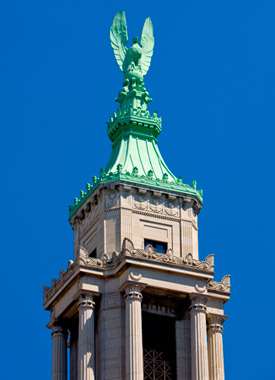Carl Fischer Music Relocating to 48 Wall Street in Financial District
By Al Barbarino June 13, 2013 4:04 pm
reprintsEducational music publisher Carl Fischer Music is relocating from its NoHo offices to 48 Wall Street in the Financial District, The Commercial Observer has learned.

The company, founded in 1872, signed a 5,930-square-foot long-term lease for the entire 28th floor of the 324,000-square-foot, 34-story building, drawn to its wraparound windows and easy build out.
“A big draw was the fact that it is a tower floor with panoramic views,” said Thomas Murtha of Capstone Realty Advisors, who represented the tenant with Joseph McLaughlin and Gabriel Freydson. “It did not require much construction – just some minor modifications to make the space work for them.”
The space features windows on all sides, with excellent natural light, Mr. Murtha said, noting that a usable terrace was an added bonus. Some perimeter offices were removed to create more open, collaborative space, he added.
Asking rents on the floor were in the upper $30s, sources said.
The Carl Fischer catalogue is made up of a diverse selection of music, musical literature, and pedagogy from premiere composers, representing genres from concert music to jazz, and instrumental categories ranging from concert band and orchestra to woodwind and percussion.
“It was certainly a pleasure to work with such a long-established company,” Mr. Murtha said, noting the same for landlord Swig Equities, which was represented in-house by Jonathan Dean.
Formerly known as the Bank of New York Building and now a National Register landmark office building, 48 Wall Street was built in 1928 on land used by the bank since 1797. Its former banking hall has been modified to house the Museum of American Finance, which moved there in October 2007.
The building was designed by Benjamin Wistar Morris, a prominent architect of the 1920s. Upon completion, its limestone exterior with a crowning copper eagle was among the most visible features of the New York skyline.



